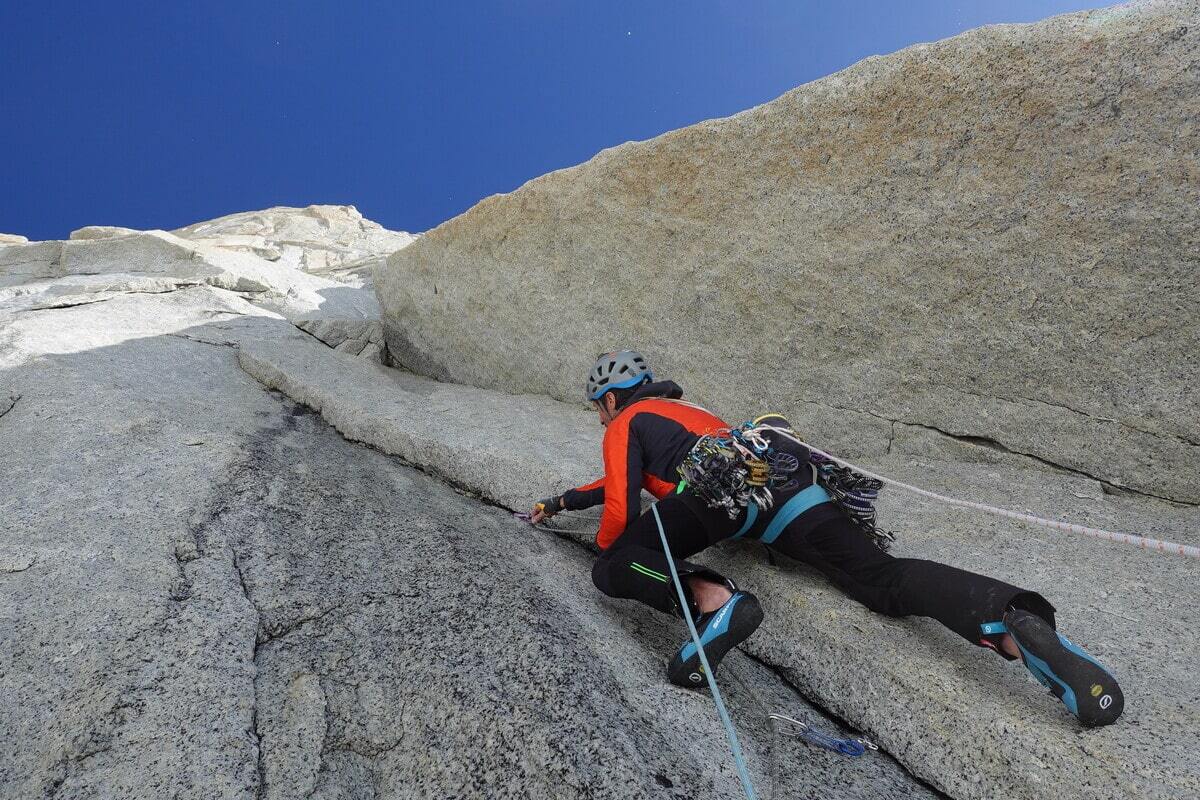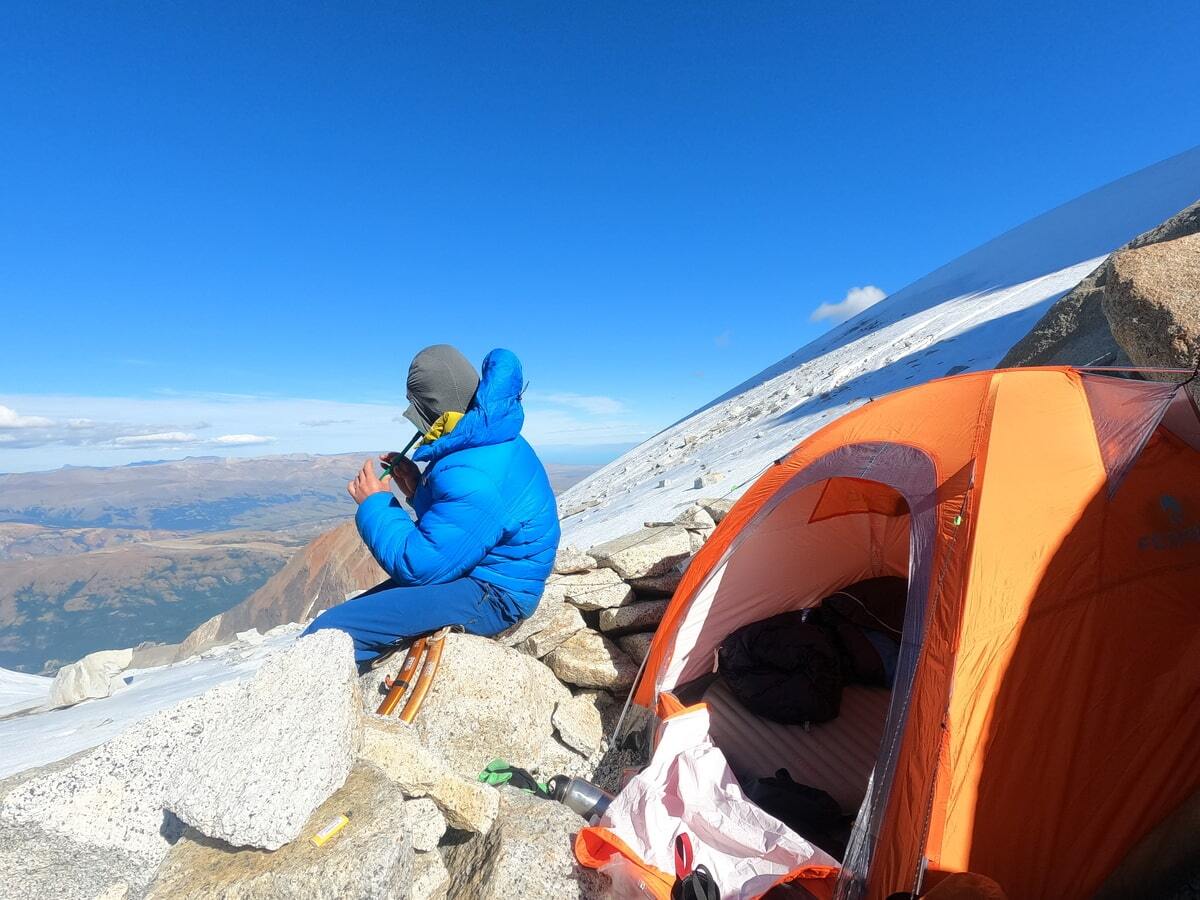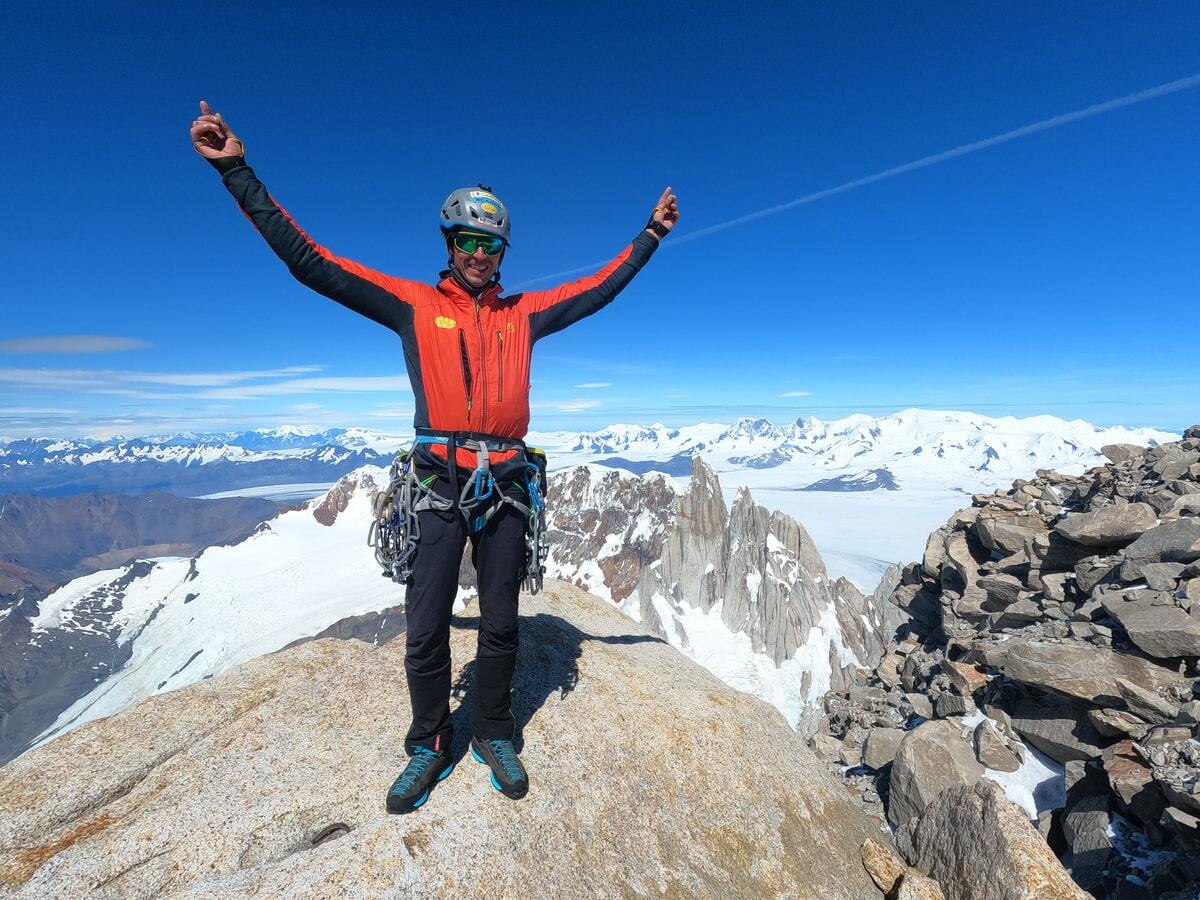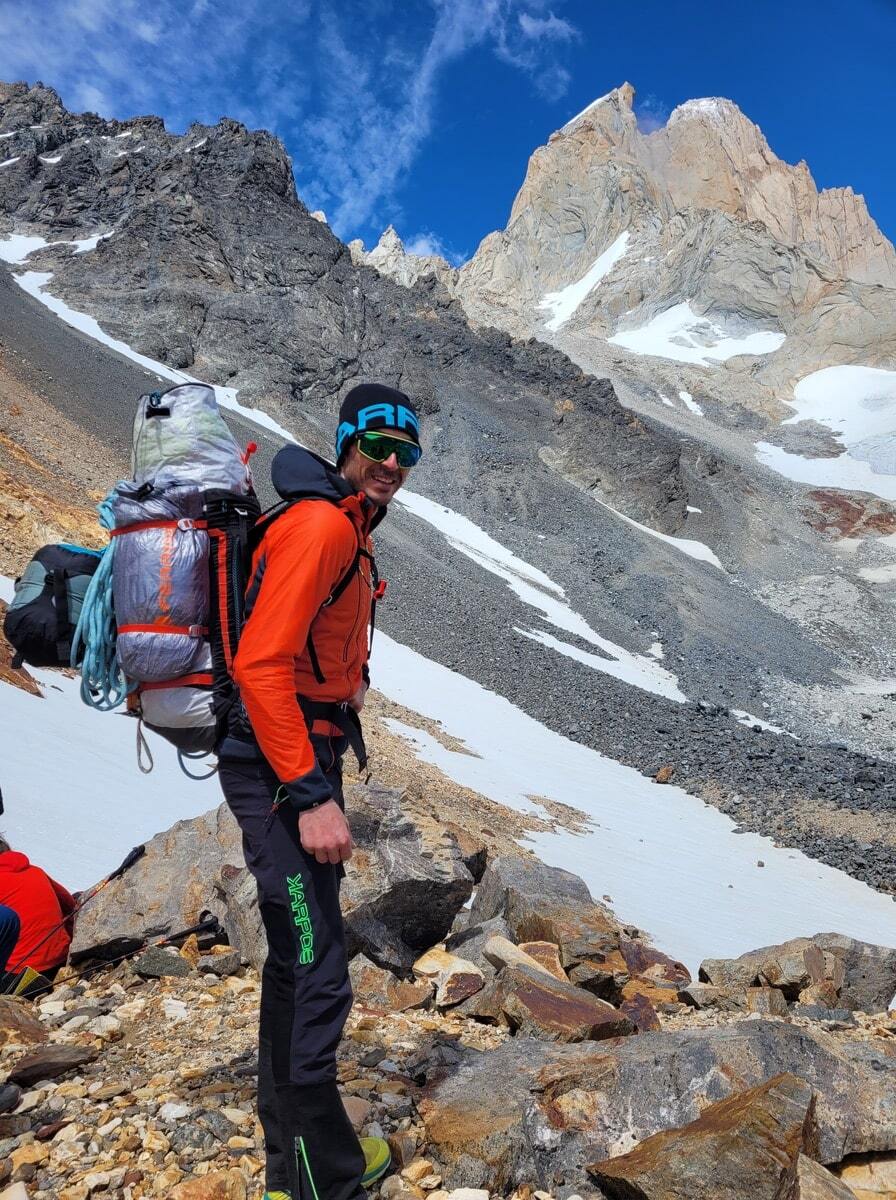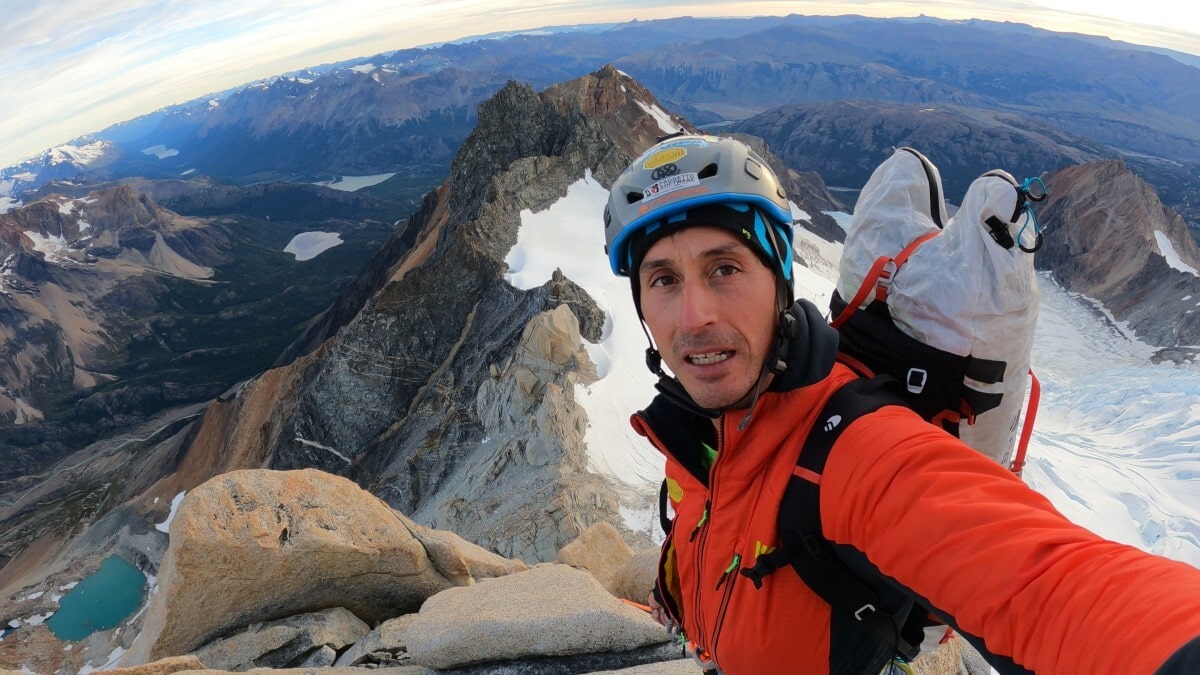
For Matteo Della Bordella, 2023 began with a new expedition in the mountains of Patagonia.
These difficult and wonderful peaks, characterized by large walls of fiery red granite that rise in the extreme south of the American continent and where technical climbing in the environment can be pushed to the maximum levels, have now become his second home.
This is in fact the twelfth time that Della Bordella has returned to Patagonia, to pursue the great dreams that have made him one of the greatest contemporary experts on these peaks, with climbs such as the first ascent of the unclimbed west face of Torre Egger (completed in 2013 together with friends Matteo Bernasconi and Luca Schiera) or the recent first ascent in salpine style of the east face of Cerro Torre, where Matteo, roped with David Bacci and Matteo De Zaiacomo, traced the route Brothers in Arms in the austral summer of 2022, dedicated to the unfortunate Corrado Pesce, a very strong climber killed by an avalanche just after having reached the summit of the Torre at the same time as them.
The mountains of Patagonia are fickle, where being good and prepared is not enough to achieve your goals. Here, the last word is always the wind and the storms that come incessantly and violently from the Pacific Ocean, to the west, and decide the fate of each expedition. The infamous "bad weather" is part of the myth and also of the charm of this land and the season just ended, in this respect, was worthy of the best Patagonian tradition.
"This year I was able to dedicate three months to the expedition - says Matteo - but in the second half of my stay the weather was consistently bad and, even in the first month and a half, the windows of good weather were always too small to be able to complete the projects with which my partner Leonardo Gheza and I had started. So, as experience has taught us, we had to adapt and improvise, accepting the opportunities that Patagonia offered us and focusing everything on speed".
The opportunity to "warm up the engines" for Matteo and his partner came just a few days after their arrival, with a first short two-day window, which they took advantage of to open a new route on the east face of Aguja Mermoz (2732 m), in the Fitz Roy group.
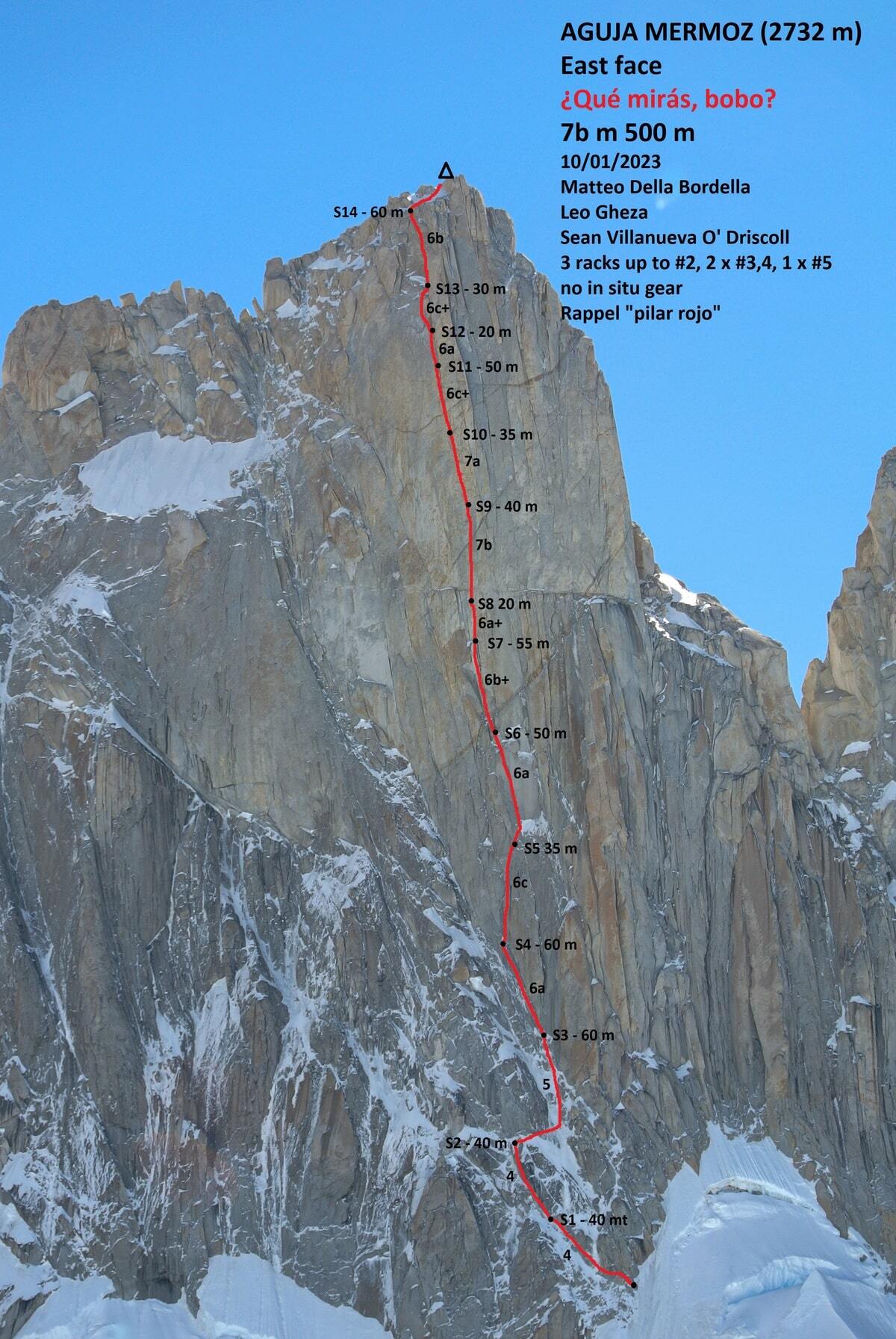
Matteo recalls: "Even though it is a "minor" peak compared to the gigantic Fitz Roy that stands next to it, Mermoz, especially on the eastern side, offers a beautiful wall with at least 500 meters of altitude difference, very vertical and crossed by several systems of cracks. It was an objective I had been thinking about for some time, also because up until now there were only two other routes on the wall: the famous and beautiful Pilar Rojo and the one opened by Casimiro Ferrari in 1995. This seemed like the right opportunity to go and have a look!".
The two Italian climbers were joined by Belgian champion Sean Villanueva and the three, after 12 hours of climbing, managed to open their new route: a demanding and tiring crack climb, completed completely free climbing and without bolts, with difficulties up to 7b. After a splendid sunset on the summit, accompanied by the sound of the flute that Sean brings with him on every climb, the three began the rappel down the Pilar Rojo route, returning just in time for the arrival of the expected storm...
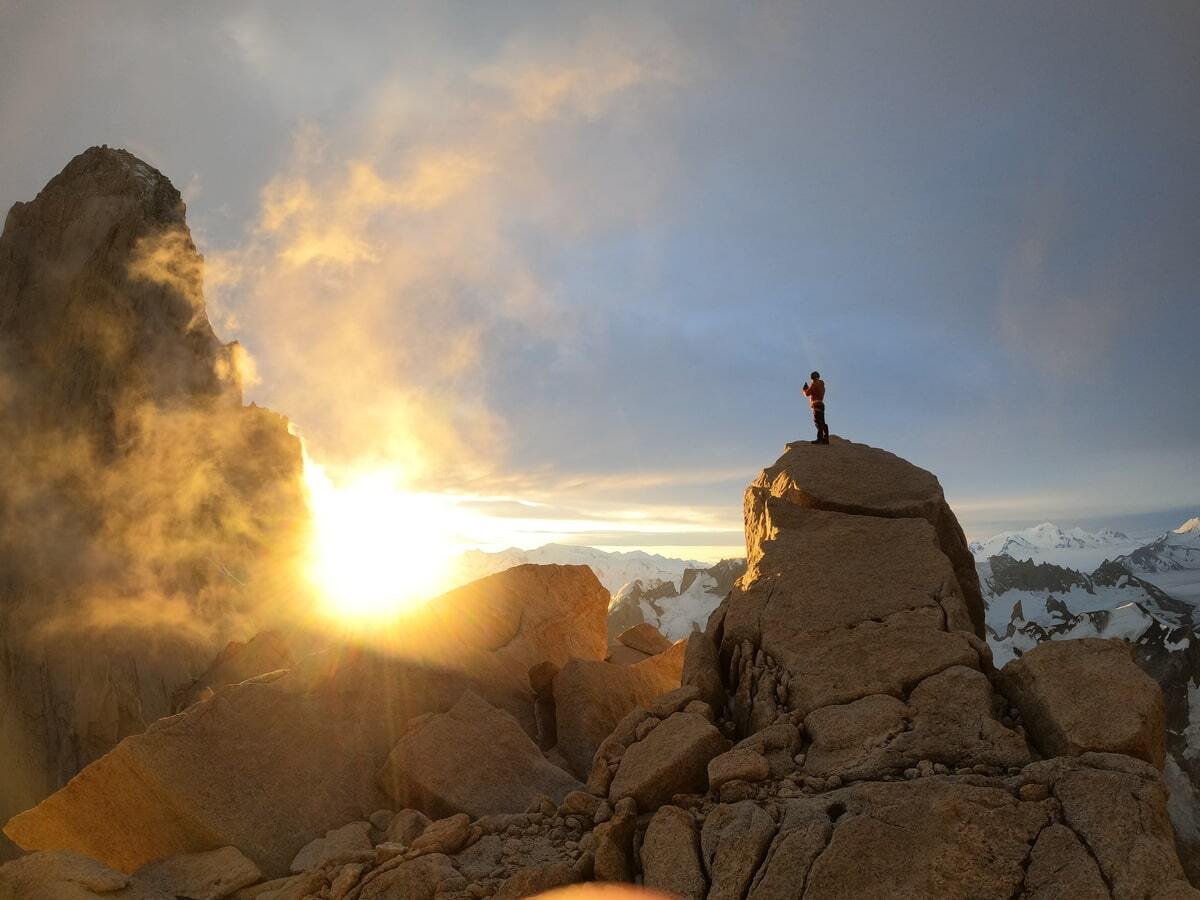
After this first "warm-up" climb, Della Bordella and Gheza were able to begin focusing on one of the objectives they had started with: the complete crossing of all the peaks of the Fitz Roy group, an endless ride of over 4,000 meters of positive altitude difference with ever-higher difficulties, which, to date, has been completed only twice: the first to complete the crossing in a north-south direction were in fact the Americans Tommy Caldwell and Alex Honnold in 2014. The author of the crossing in the opposite direction was Villanueva himself, in 2022, with a wonderful solo feat.
"Once we returned from Mermoz, the forecast was for a new and wider window of good weather, even if it wasn't clear how long it would last - continues Matteo - we knew that that could have been our only chance, so, after a few days of rest in El Chalten, we immediately set off again. Our estimate was to take at least five days to complete the crossing. The first difficulty, therefore, was to ration the loads in our backpacks, to have enough food and equipment without weighing us down excessively, given the difficulties we had to face. In this delicate preparation phase, once again the support of Ferrino was very useful, as they provided us with their Blizzard model high-altitude single-layer tent. A product that the Turin company has further improved and modified to meet our needs, making it even lighter. With me I also had the 45-liter Instinct backpack, which I have already had the opportunity to appreciate: it is large enough to carry loads for multi-day climbs and, thanks to the removable band, it is very comfortable even during the climb" .
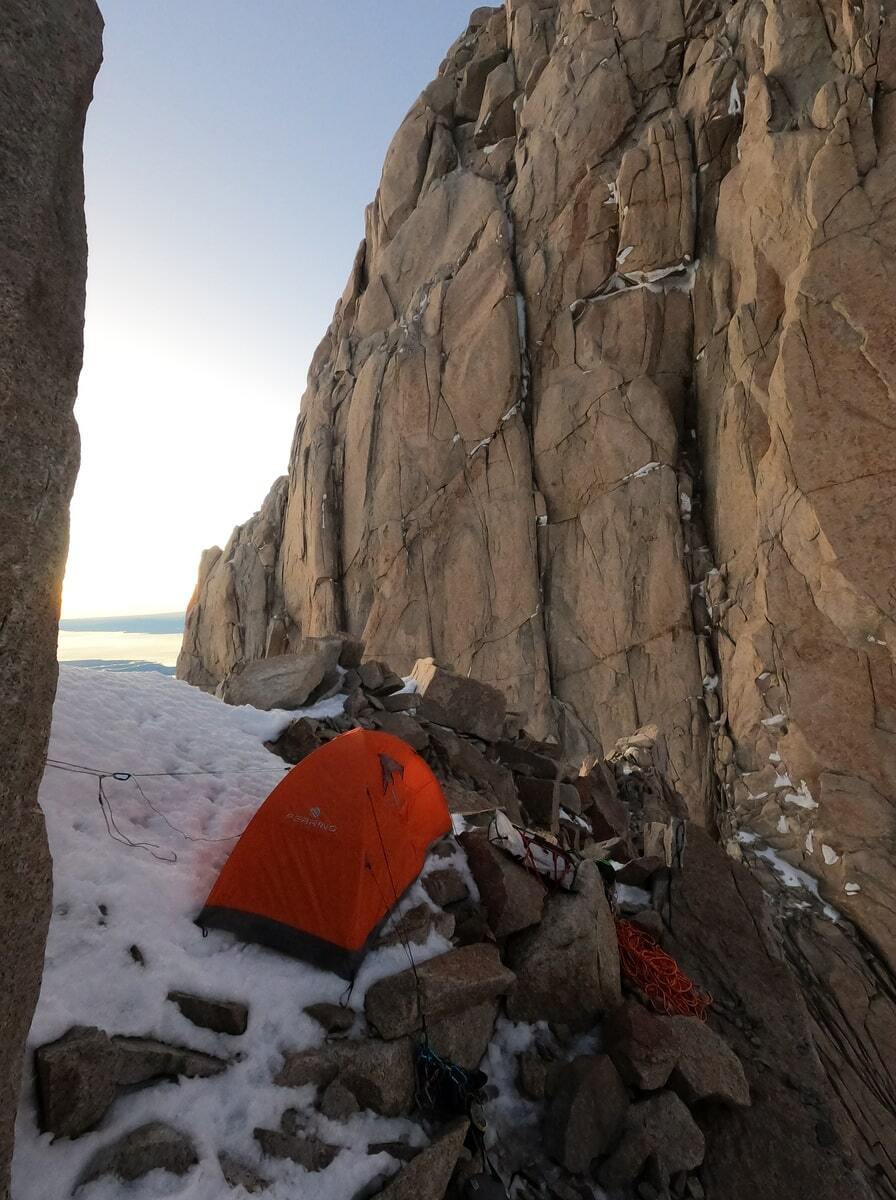
On January 16, after reaching the Guillaumet Pass, Matteo and Leo began their great course with a technique that was unorthodox compared to the normal rules of roped progression, but which represents the only way to achieve objectives of this type, as Matteo himself explains: "We decided to climb continuously, always moving simultaneously along the face, without ever setting up rest points. I was in front until the top of the Guillaumet, then Leo took the lead until we reached the top of the Mermoz. It took us only six hours to get there. Proceeding in tandem on such difficult terrain is a technique that requires great experience and maximum confidence in your own abilities and those of your partner, but it is the only way to tackle such long climbs, where safety is also given by the speed with which you can progress" .
The first day of climbing continued for another five hours along the ridge, up to the “Bloque empotrado”, the enormous wedged boulder from which you access the Fitz Roy pillar.
After the bivouac, Matteo and Leonardo set off from there to tackle one of the most challenging sections of the traverse, represented by the legendary route opened solo in 1979 by the great Renato Casarotto: “Here too, we started in tandem – Matteo continues – but after a few hundred meters we had to start climbing in rope lengths. The difficulties of this itinerary are decidedly greater than those declared in the guides and retracing it has further increased my esteem and admiration for Casarotto, who in those years and alone was able to create a decidedly futuristic climb!” .
After a second bivouac on the top of the pillar, the two climbers finally reached the summit of Fitz, but there they received bad news by radio: the window of good weather was already closing and a new disturbance was just around the corner.
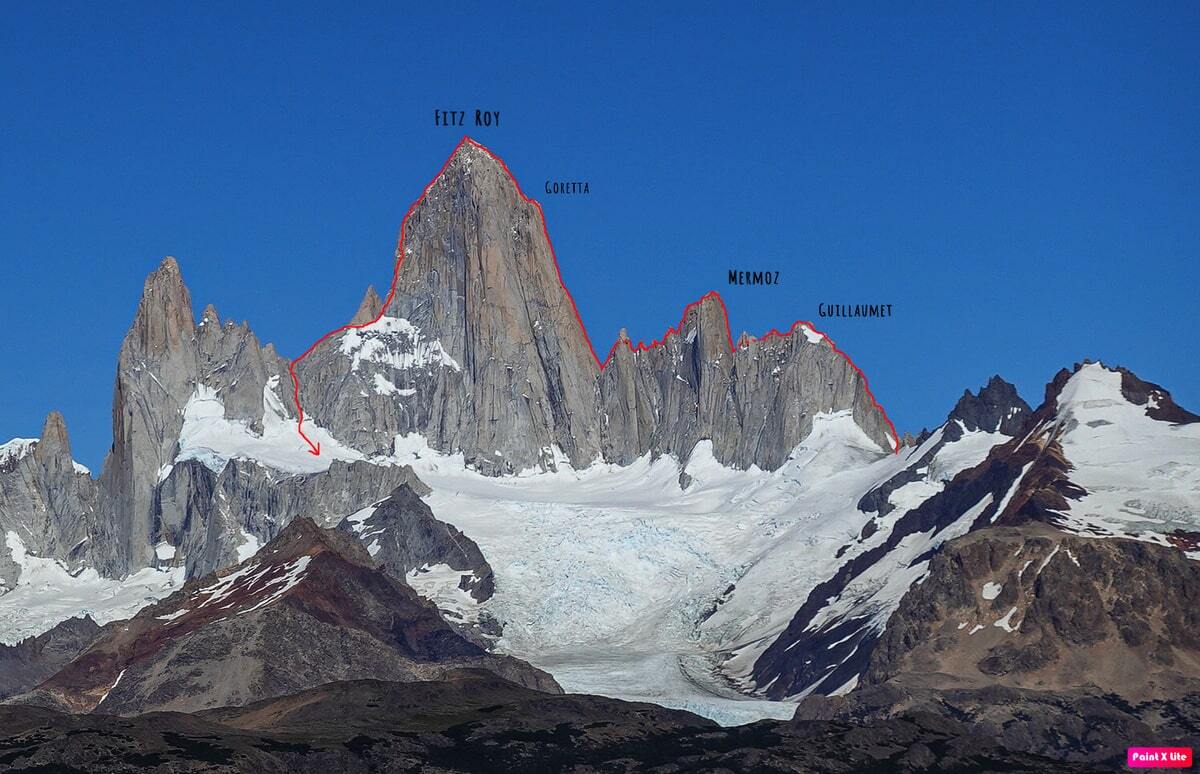
With many other peaks still to be climbed (the complete crossing of the Fitz group also includes the ascent of Aguja Poincenot, Aguja Rafael Juarez, Aguja Saint-Exupery and Aguja De la S) Matteo and Leonardo preferred to interrupt the climb, abseiling down the Franco-Argentine route.
“After this attempt, Patagonia did not give us any more opportunities to try the traverse again – concludes Della Bordella – in the following weeks the weather was almost constantly bad, even if in a short interval between the disturbances I still managed to repeat in complete free climbing with Kico Cerdá the route Rayo de luz, a beautiful itinerary on the west face of Aguja Guillaumet”.
This new Patagonian trip has left Matteo with memories and food for thought that go beyond the purely mountaineering context: "The extremely reliable weather forecasts that we have available today allow us to make the most of even the short intervals of good weather and to move more safely, managing to avoid finding ourselves on the wall in the middle of the infamous Patagonian storms. Unfortunately, however, climate change exposes climbers to new dangers: in the twelve years since I have been frequenting Patagonia I have seen the conditions of its glaciers and walls change radically, often making once safe routes extremely risky. The high temperatures of this season, for example, have transformed the descent from Fitz Roy, which I had done several times in the past years and which this time proved to be particularly dangerous and constantly exposed to falling rocks and ice. Unfortunately, even this land so powerful and wild, apparently far from the rest of the world and from the problems that plague our daily lives, is affected by the impact of human activities on the environmental balance of the planet. Experiencing this influence directly is truly impressive and requires reflection on the urgent need to do something to change our behaviors” .

